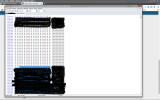onsitbin
Member ++
- Joined
- Jan 3, 2010
- Messages
- 68
- Reaction score
- 33
continue:.
Values:
===========================================================================
CSA-Rootkey =35XXXXXXXXXXXXXXXXXXXXXXXXXXXXEE
R2R-Rootkey =2XXXXXXXXXXXXXXXXXXXXXXXXXXXXXX1
NagraDebugInterfacePassword_Jtag = 8XXXXXXXXXXXXXX1
===========================================================================
===========================================================================
CSA-Rootkey encrypt = 7XXXXXXXXXXXXXXXXXXXXXXXXXXXXXXD
R2R-Rootkey encrypt = 2XXXXXXXXXXXXXXXXXXXXXXXXXXXXXX0
NagraDebugInterfacePassword_Jtag = 7AXXXXXXXXXXXXX0
===========================================================================
By The_Onsitbin
Values:
===========================================================================
CSA-Rootkey =35XXXXXXXXXXXXXXXXXXXXXXXXXXXXEE
R2R-Rootkey =2XXXXXXXXXXXXXXXXXXXXXXXXXXXXXX1
NagraDebugInterfacePassword_Jtag = 8XXXXXXXXXXXXXX1
===========================================================================
===========================================================================
CSA-Rootkey encrypt = 7XXXXXXXXXXXXXXXXXXXXXXXXXXXXXXD
R2R-Rootkey encrypt = 2XXXXXXXXXXXXXXXXXXXXXXXXXXXXXX0
NagraDebugInterfacePassword_Jtag = 7AXXXXXXXXXXXXX0
===========================================================================
By The_Onsitbin

